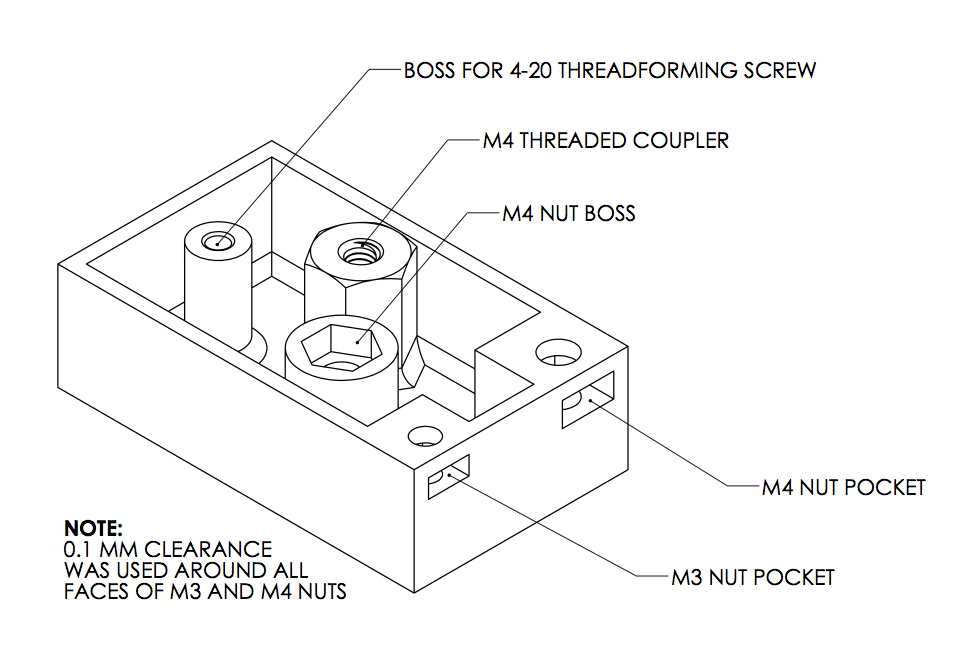Think of the last thing you 3D printed, or even just the most recent object you used. Chances are it had some moving parts, or at least parts joined together from separately made pieces. From my computer mouse to my space heater, most of the manufactured items on an d around my desk (and the desk itself) have connecting pieces. Sure, none of these things were made on a 3D printer, but as they’re put together now… well, they couldn’t have been.
d around my desk (and the desk itself) have connecting pieces. Sure, none of these things were made on a 3D printer, but as they’re put together now… well, they couldn’t have been.
The reason why is pretty small, but immediately recognizable: metal threads.
3D printed pieces are used frequently in prototyping, which leads to experimental opportunities for product design and assembly. The team over at Formlabs has had plenty of experience designing, tweaking, and redesigning prototypes to be 3D printed on their Form 1+. A common solution to connecting components of 3D printed models is the character key, a sort of male-female connecting piece assembly. Check it out in action:
That’s a pretty clever construction method, but it isn’t very realistic to use in something that might need to be connected, unconnected, and reconnected repeatedly. Many traditionally manufactured pieces utilize metal threads for their effectiveness in secure connections and ability to be repeatedly used. Makers have been looking for ways to work metal threading into 3D printed pieces for some time. And now, after some trial and error, the Formlabs team has come up with some options. It has ranked them, for convenience, starting with the most effective method and going down to the least effective.
- Print a pocket for metal threads (add a nut).

- Print threads and chase with a tap.
- Use thread-cutting screws designed for plastics.
It also notes (emphasis is Formlabs):
“AVOID using press-fit or heat set threaded inserts! Even if they are designed for ‘plastic,’ they do not work well in our acrylate photopolymer resins.”
Of course, they go into more detail about methods and findings in their Inside Formlabs blog post.
The Formlabs team has tested these techniques thoroughly. Note that with male and female thread sizes, 1⁄4-20 or larger have the best chance to form functional parts without necessitating post processing, and smaller screws tend to require more customization for better fastening. “For example,” it notes, “printing a semi-circular thread profile (on screw and nut) and using a 0.1 mm offset gives better thread engagement with improved wear characteristics.”
Formlabs offers an STL download for its most successful test so you can try it at home. It also recommends ordering steel hex nuts, coupling nuts, and forming screws from McMaster.
Will you try one of these methods? How did it work for you? Let us know what your thoughts on the process are in the 3D Printed with Screw Threads forum at 3DPB.com.
Subscribe to Our Email Newsletter
Stay up-to-date on all the latest news from the 3D printing industry and receive information and offers from third party vendors.
You May Also Like
US Army Corps of Engineers Taps Lincoln Electric & Eaton for Largest 3D Printed US Civil Works Part
The Soo Locks sit on the US-Canadian border, enabling maritime travel between Lake Superior and Lake Huron, from which ships can reach the rest of the Great Lakes. Crafts carrying...
Construction 3D Printing CEO Reflects on Being Female in Construction
Natalie Wadley, CEO of ChangeMaker3D, could hear the words of her daughter sitting next to her resounding in her head. “Mum, MUM, you’ve won!” Wadley had just won the prestigious...
Blue Laser-powered M600 3D Printer Launched by Meltio
Founded in 2019 as a joint venture between Additec and Sicnova, metal 3D printer OEM Meltio develops and manufactures high-performance and easy-to-use metal 3D printing solutions that use its patented wire-laser metal...
3D Printed Storage Tanks Cut Material Costs by 25%
In a previous article, “Concrete Dreams: Let’s Print Money, Not Houses,” we discussed how the spotlight on 3D printing homes might be misplaced. Bollards, pedestrian bridges, and concrete tanks could...































